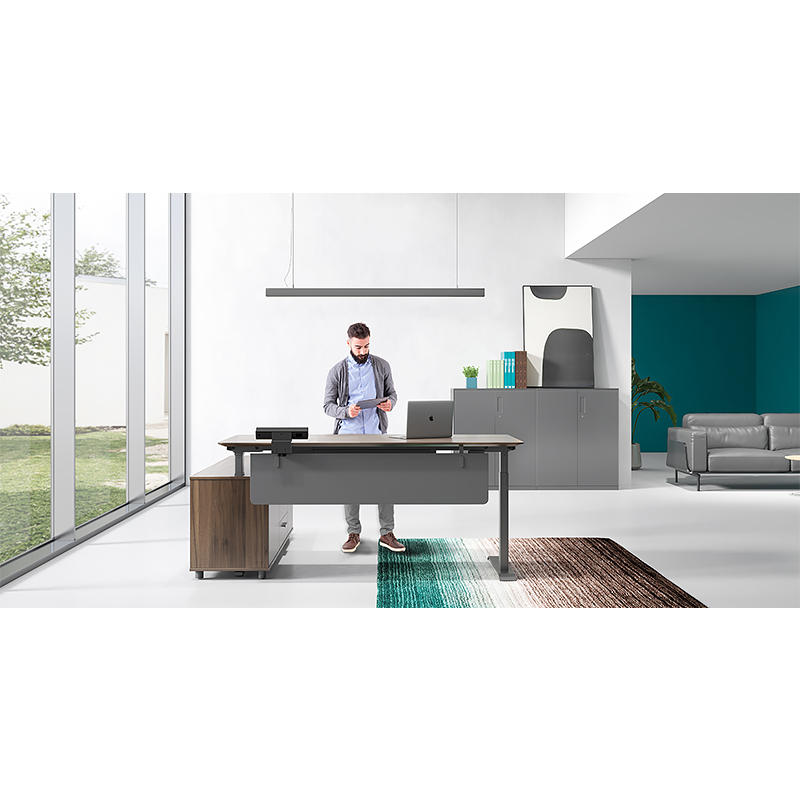The desk is the focal point of a workspace, serving as an instrument of ergonomics, organisation, and aesthetics. When considering a desk purchase, we should take into account a variety of factors to ensure that the desk aligns with individual needs, preferences, and the overall functionality of the workspace. This blog aims to explore the key considerations that should be taken into account when buying a new desk, providing an overview for individuals seeking the perfect addition to their work environment.
Finding the Right Fit: Size and Layout Considerations
The first and foremost consideration when buying a desk is the available space and the overall room layout. Measuring the dimensions of the space allows us to determine the appropriate size for the desk. Factors such as the placement of windows, doors, and other furniture should be considered to optimise the flow and arrangement of the workspace. A well fitted desk not only enhances productivity but also creates a visually pleasing and organized atmosphere.
Function First: Matching Your Desk to Your Work
Understanding the intended functionality and purpose of the desk is crucial. Different professions and tasks demand varying desk features. For instance, creative professionals may require a desk with ample surface area for sketching or drafting, while IT professionals might be paperless and rather prioritize cable management and space for multiple monitors. It is important to consider the tasks you’ll be performing and choose a desk that matches your specific needs.
Shape Up: Choosing the Ideal Desk Design
Desks come in various shapes and designs, each catering to different preferences and spatial constraints. Common desk shapes include straight or rectangular, L-shaped and U-shaped desks. The choice depends on personal preference, the available space, and the workflow requirements. L-shaped desks, for example, provide a spacious and versatile work surface, while straight desks are ideal for optimizing smaller spaces.
Material Matters: Durability, Style, and Easy Care
The material of the desk greatly influences its durability, aesthetic appeal, and maintenance requirements. Desks can be made from a variety of materials, such as commercial melamine, metal, glass, or a combination of these. It is important to consider the durability required for the specific tasks you’ll be performing. If heavy equipment will be placed on the desk, a sturdy metal frame or solid wood construction may be preferable. Additionally, the material should complement the overall design of the space.
Ergonomics for Everyone: Comfort That Lasts
A desk that promotes ergonomic principles is essential for maintaining long-term comfort and preventing health issues. Pay attention to the desk height, ensuring that it allows for proper alignment of the wrists and elbows. Some desks also come with adjustable features to accommodate individuals of varying heights. Ergonomic considerations extend beyond the desk itself to include the chair and the overall workstation setup, promoting a healthy and comfortable working environment.
Declutter and Conquer: Choosing Essential Storage Features
Efficient storage is crucial for maintaining a clutter free and organised workspace. The storage options provided by a desk, such as drawers, shelves, and cabinets should be contrasted with your requirements. Storage needs based on the type of work you do and the items you need to keep within reach. A well-designed office desk with integrated storage solutions can enhance productivity by keeping essential items organised and easily accessible.
Visual Appeal: A Desk that Reflects Your Style
While functionality is paramount, the aesthetic appeal of the desk should not be overlooked. The desk’s design and style contribute to the overall ambiance of the workspace. A desk should complement the existing decor and reflect your personal style. A cohesive and visually pleasing workspace can have a positive impact on mood, productivity and the way you are perceived.
Budgeting Like a Boss: Finding the Best Value for Your Workspace
Setting a budget is a practical step in the desk-buying process. Desks are available in a wide price range and determining a budget helps to narrow down options and prevents overspending. While it’s tempting to invest in a high-end desk, there are plenty of value for money, budget-friendly options that offer both functionality and style. The long-term value of the desk in relation to its price should be your focus, taking into account factors such as durability and features.
conclusion
In conclusion, the process of buying a desk involves careful consideration of several key factors. From the spatial layout and intended functionality to the materials, ergonomics, and budget considerations, each element plays a crucial role in determining the suitability of a desk for a particular workspace. By approaching the desk-buying process with a thoughtful mindset and considering these factors, individuals can make informed decisions that lead to a well-designed, functional, and aesthetically pleasing work environment.










